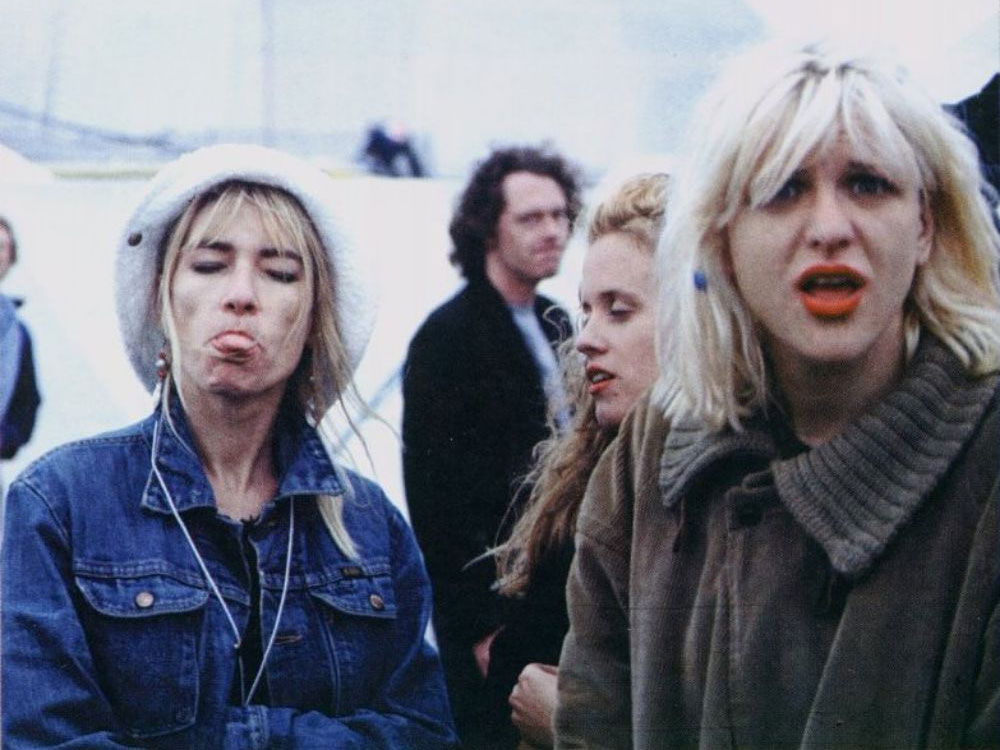In August 1991, in the throes of a tightening political and economic downward spiral, the KGB made one final attempt to save the Soviet Union. News of the infamous “dacha coup” reached Sonic Youth on the morning they arrived in London to begin their European summer festival tour. Ironically, the party hardliners succeeded only in neutralizing moribund Premier Mikhail Gorbachev, clearing the way for Russian president Boris Yeltsin to accelerate his disassembly of Soviet communism once and for all. By year’s end, a load-bearing column in the world’s vision of an alternative to capitalism had collapsed.
Capitalism, as it turns out, was adept enough at generating alternatives of its own. By some strange alchemy, the American counterculture’s political defeat in the late ‘60s had paradoxically guaranteed its robust commercial afterlife. By the end of the Reagan ‘80s, an ecosystem of rugged, do-it-yourself musicianship, contemptuous of corporate and state hegemony, appeared ripe at last for harvest by the mainstream under the designation “alternative rock.” Freshly recruited from the center of this scene to David Geffen’s DGC label for their 1990 album Goo, Sonic Youth was a respectable bet to become the next big US rock band. Friend and music video director Dave Markey might have suspected as much when he joined the medium-cool New York City quartet on tour, with a super-16 camera and a suitcase of Kodak film in tow. But an advanced copy of the new album from the band’s labelmate and opening act Nirvana was the first sign that history had other plans.
Of the eighteen live performances captured for the documentary, five come courtesy of the Aberdeen, Washington trio. With their tourmates and sundry musicians, Krist Novoselic, Dave Grohl, and Kurt Cobain also round out a troupe of comic players in the offstage vignettes (many mock-inspired by Madonna’s recent tour documentary, Truth or Dare) that Markey intersperses throughout the concert footage. Shot before the explosion of Nevermind, but edited afterward, 1991 strains symbolically at the transition then in progress, from artistic and economic self-determination (“indie”) toward a commercial phenomenon supercharged by its industry collaborators (“grunge.”) Markey captures Sonic Youth at the full range of their powers, from menacing newish single “Kool Thing” to vintage surf-rock death rite “Expressway to Yr. Skull.” Their mastery of dissonance, distortion, and violent noise—not merely as stunts, but as deliberate compositional tools—melds expertly with Markey’s psychedelic montages, replete with dancing colors, low-shutter speeds, and high-contrast black-and-white. From his portable microphone, court jester Thurstone Moore’s fuguelike pseudo-narration makes clear the philosophy of refusal at the heart of his preferred brand management strategy.
Less media-averse by far is Courtney Love, in a walk-on appearance, yet-unattached to her famous better half. Cobain, for his part, remains the enigma—pummeled into aloofness, it seems, with chronic stomach pains; content with a quiet makeover by Kim Gordon, or the odd plunge into a drum kit to close out a set. On a preview of “Smells Like Teen Spirit,” his prematurely thrashed vocals radiate an aura, less of irony than abandon—the same abandon that would make his success and eventual catastrophe equally inevitable. Ennui never sounded so much like ecstasy as it did at the end of history.
1991: The Year Punk Broke screens tonight, November 25, at Nitehawk Williamsburg as part of the series “American Movies: 90s Docs.”



